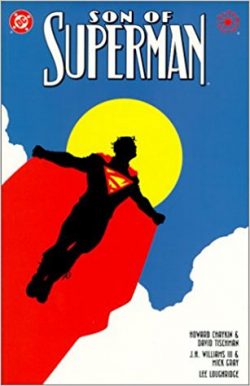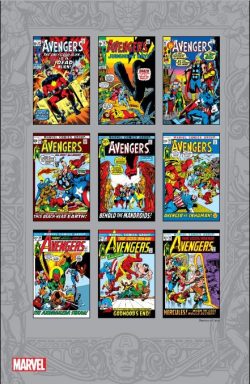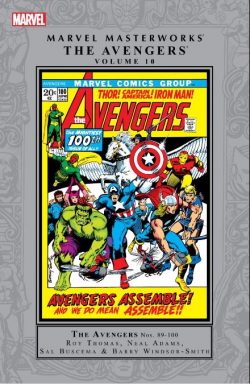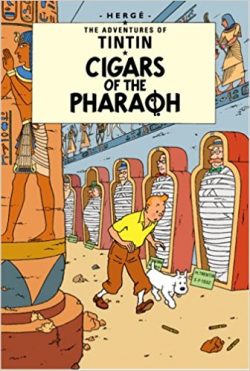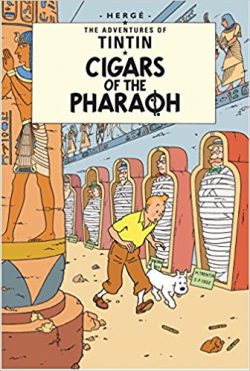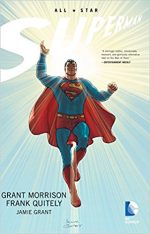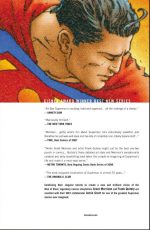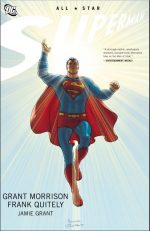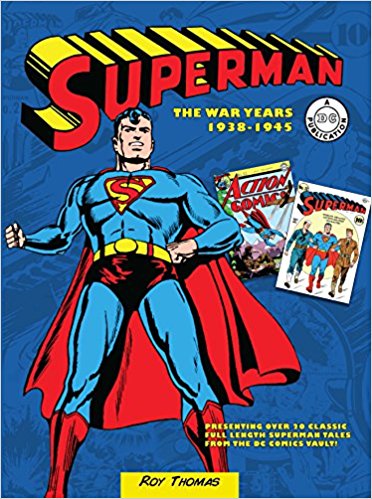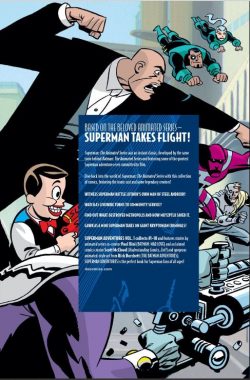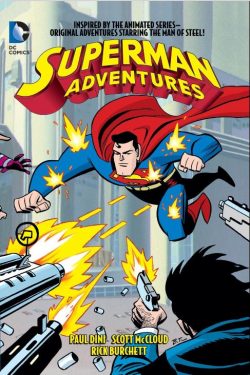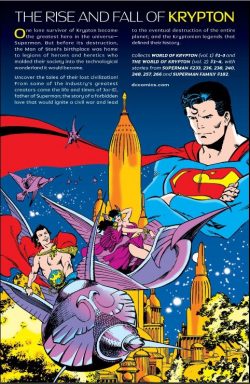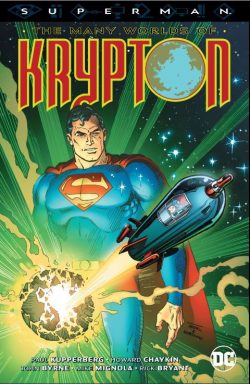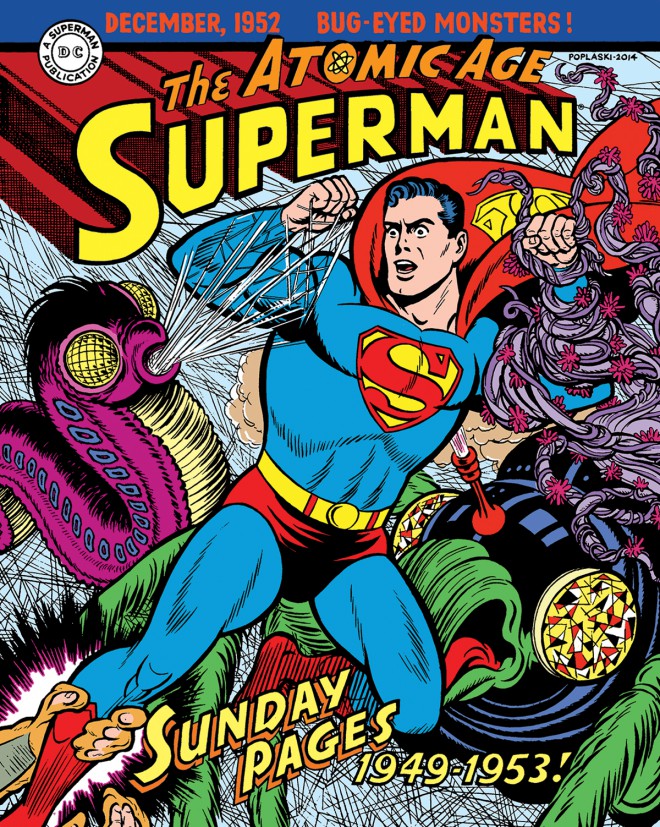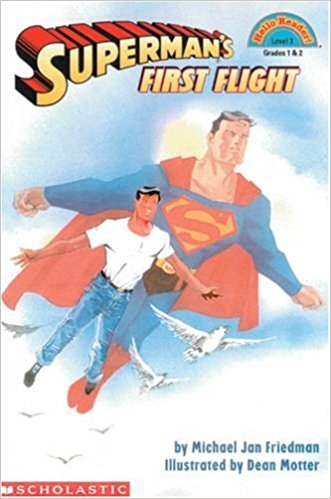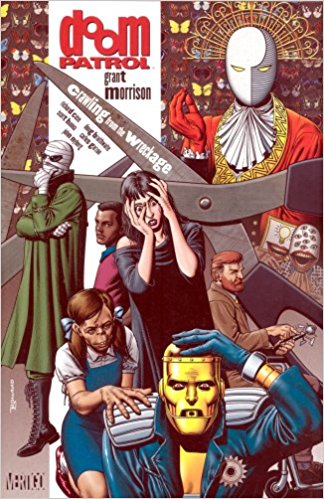
By Grant Morrison, Richard Case, Doug Braithwaite, Scott Hanna & various (DC Comics)
ISBN: 978-1-56389-034-5
In 1986, mega-monster continuity reboot Crisis on Infinite Earths led to DC overwriting fifty years of continuity and revamping or reinventing their major properties. The massive spring cleaning exercise led to a swathe of bold, innovative titles and a fresh look at how comicbooks could be done.
A revival that began quite conventionally almost overnight became the one of company’s most radical enterprises. Despite having solid roots back in the Silver Age, Doom Patrol was a series that really dared to be different…
In 1963 DC/National Comics – without no prior warning – converted venerable anthology-mystery title My Greatest Adventure into a (remarkably fringe) superhero team-book with the 80th issue.
The debut tale introduced a startling squad of arguably disabled champions with their thematic roots still firmly planted in the B-movie monster films of the era which had for so long informed the tone and timbre of the parent title.
That aesthetic subtly shaped the progression of the strip – which took total control of the comic within months, prompting a title change to The Doom Patrol with issue #86 – and throughout its 6-year run, made the series one of the most eerily innovative and happily hip reads of that generation.
No traditional team of masked adventurers, the cast comprised a robot, a mummy and a pliable 50-foot woman in a mini-skirt, who joined forces with and were guided by a brusque, domineering, paraplegic mad scientist; each and all equally determined to validate themselves by fighting injustice their way…
Those damaged champions comprised competitive car racer Cliff Steele, but only after he had “died†in a horrific pile up, with his undamaged brain transplanted into a fantastic mechanical body… without his knowledge or permission…
Test pilot Larry Trainor had been trapped in an experimental stratospheric plane and become permanently and lethally radioactive, with the dubious benefit of gaining a semi-sentient energy avatar which could escape his body to perform incredible stunts for up to a minute at a time. To pass safely amongst men Trainor had to constantly wrap himself in specially-devised radiation-proof bandages.
Former movie star Rita Farr had been exposed to mysterious swamp gases which gave her the unpredictable and, at first, uncontrolled ability to shrink or grow to incredible sizes.
These outcasts were brought together by brilliant but enigmatic Renaissance Man Niles Caulder who, as The Chief, sought to mould marginalised misfits into a force for good. The wheelchair-bound savant directed the trio of solitary strangers in many terrifying missions as they slowly grew into a uniquely bonded family…
Even the way the series ended was radical for its time. Final issue Doom Patrol #121 (September/October 1968) saw three quarters of the team sacrifice their lives to save a village of inconsequential nobodies.
Over succeeding years clever backwriting revived them all, but to us readers at the time, that issue was shocking and incomprehensible.
In 1987, supplemented by new team-mates, the Doom Patrol – now based in Kansas City – returned to muddle along for 18 issues (and a few one-shots and specials), before again being devastated by death and living up to their perhaps ill-considered name. Following an invasion by an alliance of alien races, a “gene bomb†was detonated in Earth’s atmosphere which warped, erased or triggered the powers of many metahumans.
In the resulting fallout, the team suffered appalling losses…
Thus here, as neophyte Scottish import and unknown quantity Grant Morrison began his American writing career, Negative Man has been separated from his human host, Cliff Steele has suffered a psychological collapse, energy-caster Tempest has ceased using his abilities and teenaged trainee Lodestone lies in a coma…
This collection gathers Doom Patrol volume 2 #19-25 (the monthly issues from February-August 1989, as first collected in one of DC’s earliest trade paperbacks in 1992), wherein traditional team super-heroics were abruptly and ignominiously jettisoned in favour of Big Concept science, “sophisticated suspense†and macabre creeping terror.
A less celebrated but equally crucial component of the revolutionary change was penciller Richard Case, whose stylish, low-key interpretation of some of the (at that time) strangest scripts, situations and characters ever seen in mainstream comics imbued the wildest conceptions with plausible veracity. The illustrator was usually aided and abetted by the steady assured assistance of unflappable inker Scott Hanna.
Here, however, the opening chapter is inked by Carlos Garzón as an eerie, eponymous adventure begins with ‘Crawling from the Wreckage’ with a nightmare-wracked Cliff Steele receiving a visitor in the sanatorium where he voluntarily languishes.
Robotics wunderkind Dr Will Magnus – who created the Metal Men and had rebuilt and reconstructed Cliff from the scraps which survived the explosion which ended the first Doom Patrol – has come calling, eager to fix his former patient and repair this latest glitch…
As intense, obsessive Niles Caulder browbeats burned out Josh Clay (AKA Tempest) into staying with the team in a “non-combat†capacity, over at the Alamance Memorial Hospital Larry Trainor is recovering from major injuries and revelling in the fact that he is no longer a radioactive freak hosting a bizarre energy parasite.
The only down side is the cost: the death of his partners and protégés and the persistent comatose state of youthful new team-mate Rhea Jones, the magnetically-empowered Lodestone.
Larry’s complacency is shattered when he starts seeing the Negative force again, howling to be let back in…
As Magnus struggles to counsel Cliff, the energy apparition moves again on Larry, possessing both him and his attending doctor Eleanor Poole coldly remoulding them all into an eerie three-part, multiple-gendered amalgamated being calling itself Rebis…
Magnus meanwhile plays his last card: with Robotman locked in self-pity and self-loathing, the master engineer switches tactics by appealing to Cliff’s heroic humanity and abiding compassion. He introduces the man of metal to fellow-patient Kay Challis: a young woman known to all as Crazy Jane.
Afflicted with multiple personality disorder, she manifests as (at least) 64 very different people, and since the gene bomb detonation, each one has manifested a different super power…
And elsewhere, a hideously burned crash victim who takes far too long to die drops a very strange black book and stops muttering the phrase “the Scissormenâ€. Federal agents on the scene resignedly realise this case needs the unique attention of Niles Caulder and his band of freaks…
Strange phenomena begin to proliferate globally in ‘Cautionary Tales’ (inked by Hanna) culminating in reports of many disappearances. Each vanished victim is marked by the silhouetted hole he or she leaves in reality…
As Caulder is cautiously recruiting hyper-intelligent, emotionally distant Rebis, across town Magnus cannot believe the change in Cliff. With Jane now his inseparable companion, Steele has regained much of his previous poise and lucidity: so much so, that Magnus offers to rebuild him a new body with sensors and feedback systems which will restore or approximate all the physical senses lost since becoming a brain trapped inside an ambulatory metal jail cell…
Apparently also back is Robotman’s gift for attracting trouble, as his evening walk with Jane is interrupted by a plummeting body screaming about “Scissormenâ€. With arcane abductions and cross-dimensional incursions mounting, the sanatorium becomes ground zero for packs of terrifying, gibberish-spouting, blade-handed invaders who attack staff and inmates, with only Jane’s arsenal of new abilities keeping her and Cliff out of the scything clutches and apparent extra-dimensional excisions…
All over the world bizarre phenomena and uncanny events mount…
More information – if not understanding – accrues with ‘Worlds in Collision’ as Kansas City begins to merge with a ghastly otherplace metropolis. Cliff and Alice battle macabre and unnatural foes all the way to the Doom Patrol’s new HQ in the Rhode Island mountain that was the original sanctuary of the Justice League of America.
Here, Caulder deduces their enemy is actualised metafiction stemming from a philosophical thought experiment that escaped its own boundaries to invade consensual reality but before he can formulate a response an army of Scissormen converge on their location and cut Josh out of existence. With no other choice and fed up with running, Cliff leads Rebis and Alice on a counterstrike into the heart of ‘The Ossuary’ to demolish the predatory city of Orqwith from within using brute force and pedantic logic…
With a semblance of normality restored just in time, the Doom Patrol settle in and welcome hirsute simian pre-teen Dorothy Spinner into the fold. Her uncontrolled ability to manifest monsters from her memory and imagination is only the most minor of annoyances, however, compared to the incursion of an ancient extradimensional hunter who abducts Lodestone’s comatose body from the hospital.
Thankfully, Crazy Jane has just the personality and powerset to follow ‘The Butterfly Collector’…
Divining his many names and history of slaughtering women throughout history, she leads the team’s break in to ‘The House that Jack Built’ where the red-handed butcher’s many outrageous claims and sadistic acts prove ultimately no proof against the Patrol and a suddenly awake if not aware Lodestone…
This initial trade paperback (and digital) compilation concludes with a smaller-scaled but still potentially lethal tale of ‘Imaginary Friends’. Illustrated by Doug Braithwaite & Hanna it focuses on shy, meek little Dorothy Spinner and her growing relationship with Josh Clay. A key point in her life is almost derailed and turned to bloodbath when her burgeoning biology catastrophically interacts with her thought-materialisation power and a leftover (but-still-active) trophy from the JLA’s past…
Including a context-building Introduction from Tom Peyer and ‘A Word from the Author’ first seen in DP #20, this collection of strange brews were – and remain- a magnificent mission statement for the revitalised DC Universe, offering gritty, witty fancifully cohesive and contemporary stories that appealed not just to Fights ‘n’ Tights fanatics but also lovers of wild concepts, beguiling metafiction and thrilling supercrime capers. As such they are still perfect fodder for today’s so-sophisticated, informed and ultimately sensation-hungry readers.
© 1987, 2005, 2015 DC Comics. All Rights Reserved.

